A hepatocyte-specific transcriptional program driven by Rela and Stat3 exacerbates experimental colitis in mice by modulating bile synthesis
- PMID: 39137024
- PMCID: PMC11321761
- DOI: 10.7554/eLife.93273
A hepatocyte-specific transcriptional program driven by Rela and Stat3 exacerbates experimental colitis in mice by modulating bile synthesis
Abstract
Hepatic factors secreted by the liver promote homeostasis and are pivotal for maintaining the liver-gut axis. Bile acid metabolism is one such example wherein, bile acid synthesis occurs in the liver and its biotransformation happens in the intestine. Dysfunctional interactions between the liver and the intestine stimulate varied pathological outcomes through its bidirectional portal communication. Indeed, aberrant bile acid metabolism has been reported in inflammatory bowel disease (IBD). However, the molecular mechanisms underlying these crosstalks that perpetuate intestinal permeability and inflammation remain obscure. Here, we identify a novel hepatic gene program regulated by Rela and Stat3 that accentuates the inflammation in an acute experimental colitis model. Hepatocyte-specific ablation of Rela and Stat3 reduces the levels of primary bile acids in both the liver and the gut and shows a restricted colitogenic phenotype. On supplementation of chenodeoxycholic acid (CDCA), knock-out mice exhibit enhanced colitis-induced alterations. This study provides persuasive evidence for the development of multi-organ strategies for treating IBD and identifies a hepatocyte-specific Rela-Stat3 network as a promising therapeutic target.
Keywords: IBD; Liver; Rela; Stat3; immunology; inflammation; mouse.
© 2023, Jyotsna et al.
Conflict of interest statement
J, BS, MY, AD, MM, PS, PN, NG, VA, DM, RG No competing interests declared, SB Reviewing editor, eLife
Figures


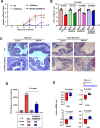

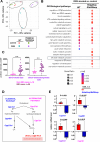
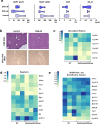







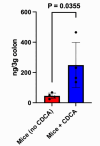




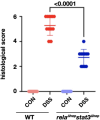

Update of
- doi: 10.1101/2023.09.21.558851
- doi: 10.7554/eLife.93273.1
- doi: 10.7554/eLife.93273.2
Similar articles
-
Hepatocyte-specific mutation of both NF-κB RelA and STAT3 abrogates the acute phase response in mice.J Clin Invest. 2012 May;122(5):1758-63. doi: 10.1172/JCI59408. Epub 2012 Apr 2. J Clin Invest. 2012. PMID: 22466650 Free PMC article.
-
An epithelial Nfkb2 pathway exacerbates intestinal inflammation by supplementing latent RelA dimers to the canonical NF-κB module.Proc Natl Acad Sci U S A. 2021 Jun 22;118(25):e2024828118. doi: 10.1073/pnas.2024828118. Proc Natl Acad Sci U S A. 2021. PMID: 34155144 Free PMC article.
-
PPARα-UGT axis activation represses intestinal FXR-FGF15 feedback signalling and exacerbates experimental colitis.Nat Commun. 2014 Sep 3;5:4573. doi: 10.1038/ncomms5573. Nat Commun. 2014. PMID: 25183423 Free PMC article.
-
Alterations in Enterohepatic Fgf15 Signaling and Changes in Bile Acid Composition Depend on Localization of Murine Intestinal Inflammation.Inflamm Bowel Dis. 2016 Oct;22(10):2382-9. doi: 10.1097/MIB.0000000000000879. Inflamm Bowel Dis. 2016. PMID: 27580383
-
Rab27A promotes cellular apoptosis and ROS production by regulating the miRNA-124-3p/STAT3/RelA signalling pathway in ulcerative colitis.J Cell Mol Med. 2020 Oct;24(19):11330-11342. doi: 10.1111/jcmm.15726. Epub 2020 Aug 20. J Cell Mol Med. 2020. PMID: 32815642 Free PMC article.
Cited by
-
Modulation of retinal inflammation delays degeneration in a mouse model of geographic atrophy.Sci Rep. 2025 Aug 17;15(1):30153. doi: 10.1038/s41598-025-15891-z. Sci Rep. 2025. PMID: 40820160 Free PMC article.
-
Bile Acids in Inflammatory Bowel Disease: From Pathophysiology to Treatment.Biomedicines. 2024 Dec 20;12(12):2910. doi: 10.3390/biomedicines12122910. Biomedicines. 2024. PMID: 39767816 Free PMC article. Review.
-
Multiomic Sequencing Reveals Distinctive Gene Expression and Epigenetic Alterations Associated With Primary Sclerosing Cholangitis Development in Treatment-Naïve Pediatric Ulcerative Colitis.Gastro Hep Adv. 2024 Nov 16;4(3):100586. doi: 10.1016/j.gastha.2024.11.002. eCollection 2025. Gastro Hep Adv. 2024. PMID: 39944929 Free PMC article.
References
-
- Bailey MA, Thompson SV, Mysonhimer AR, Bennett JN, Vanhie JJ, De Lisio M, Burd NA, Khan NA, Holscher HD. Dietary fiber intake and fecal short-chain fatty acid concentrations are associated with lower plasma lipopolysaccharide-binding protein and inflammation. American Journal of Physiology. Gastrointestinal and Liver Physiology. 2023;324:G369–G377. doi: 10.1152/ajpgi.00176.2021. - DOI - PubMed
-
- Balic JJ, Albargy H, Luu K, Kirby FJ, Jayasekara WSN, Mansell F, Garama DJ, De Nardo D, Baschuk N, Louis C, Humphries F, Fitzgerald K, Latz E, Gough DJ, Mansell A. STAT3 serine phosphorylation is required for TLR4 metabolic reprogramming and IL-1β expression. Nature Communications. 2020;11:3816. doi: 10.1038/s41467-020-17669-5. - DOI - PMC - PubMed
-
- Bessman NJ, Mathieu JRR, Renassia C, Zhou L, Fung TC, Fernandez KC, Austin C, Moeller JB, Zumerle S, Louis S, Vaulont S, Ajami NJ, Sokol H, Putzel GG, Arvedson T, Sockolow RE, Lakhal-Littleton S, Cloonan SM, Arora M, Peyssonnaux C, Sonnenberg GF. Dendritic cell-derived hepcidin sequesters iron from the microbiota to promote mucosal healing. Science. 2020;368:186–189. doi: 10.1126/science.aau6481. - DOI - PMC - PubMed
MeSH terms
Substances
Associated data
- Actions
LinkOut - more resources
Full Text Sources
Molecular Biology Databases
Miscellaneous

